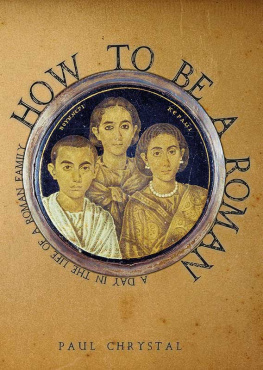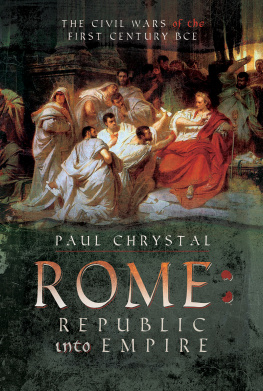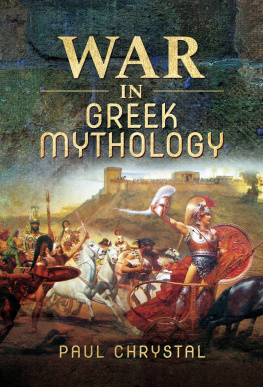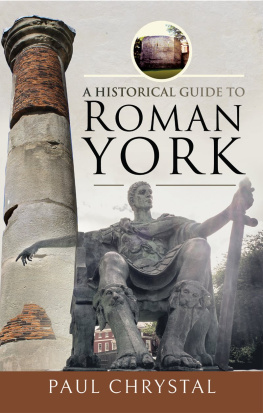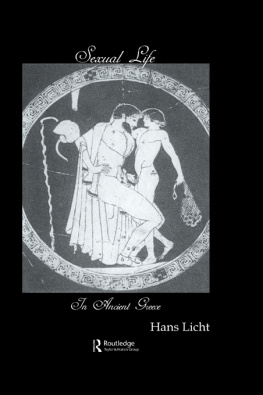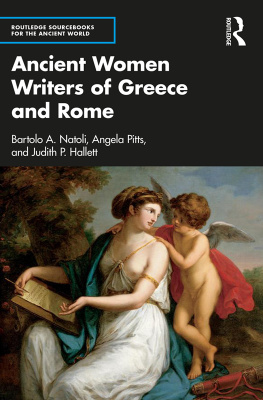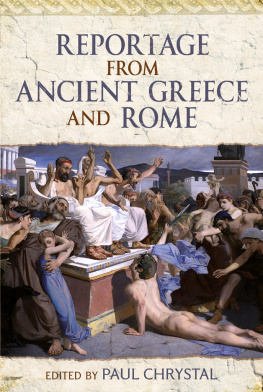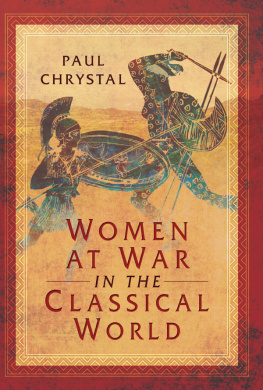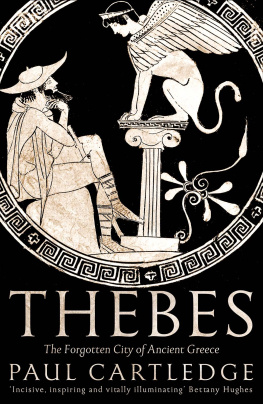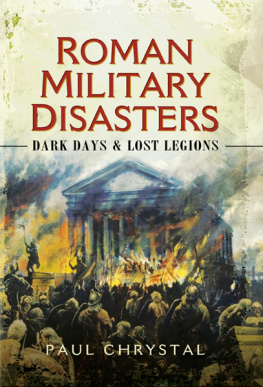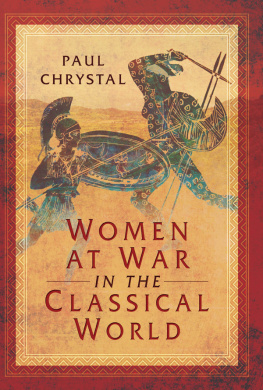Paul Chrystal - Women in Ancient Greece
Here you can read online Paul Chrystal - Women in Ancient Greece full text of the book (entire story) in english for free. Download pdf and epub, get meaning, cover and reviews about this ebook. year: 2017, publisher: Fonthill Media, genre: Romance novel. Description of the work, (preface) as well as reviews are available. Best literature library LitArk.com created for fans of good reading and offers a wide selection of genres:
Romance novel
Science fiction
Adventure
Detective
Science
History
Home and family
Prose
Art
Politics
Computer
Non-fiction
Religion
Business
Children
Humor
Choose a favorite category and find really read worthwhile books. Enjoy immersion in the world of imagination, feel the emotions of the characters or learn something new for yourself, make an fascinating discovery.

- Book:Women in Ancient Greece
- Author:
- Publisher:Fonthill Media
- Genre:
- Year:2017
- Rating:5 / 5
- Favourites:Add to favourites
- Your mark:
- 100
- 1
- 2
- 3
- 4
- 5
Women in Ancient Greece: summary, description and annotation
We offer to read an annotation, description, summary or preface (depends on what the author of the book "Women in Ancient Greece" wrote himself). If you haven't found the necessary information about the book — write in the comments, we will try to find it.
Women in Ancient Greece — read online for free the complete book (whole text) full work
Below is the text of the book, divided by pages. System saving the place of the last page read, allows you to conveniently read the book "Women in Ancient Greece" online for free, without having to search again every time where you left off. Put a bookmark, and you can go to the page where you finished reading at any time.
Font size:
Interval:
Bookmark:


Chorus: The voice of time will change and our glory will ring down the ages.
Women will be honoured. No longer will slander cling to our sex
Euripides, Medea 415-420
Fonthill Media Language Policy
Fonthill Media publishes in the international English language market. One language edition is published worldwide. As there are minor differences in spelling and presentation, especially with regard to American English and British English, a policy is necessary to define which form of English to use. The Fonthill Policy is to use the form of English native to the author. Paul Chrystal was born and educated in Scotland and England; therefore British English has been adopted in this publication.
Fonthill Media Limited
Fonthill Media LLC
www.fonthillmedia.com
First published in the United Kingdom and the United States of America 2017
British Library Cataloguing in Publication Data:
A catalogue record for this book is available from the British Library
Copyright Paul Chrystal 2017
ISBN 978-1-78155-562-0
The right of Paul Chrystal to be identified as the author of this work has been asserted by him in accordance with the Copyright, Designs and Patents Act 1988.
All rights reserved. No part of this publication may be reproduced, stored in a retrieval system or transmitted in any form or by any means, electronic, mechanical, photocopying, recording or otherwise, without prior permission in writing from Fonthill Media Limited
Typeset in 10.5pt on 13pt MinionPro
Printed and bound in England
Preface
This book is a companion volume to my Women in Ancient Rome, first published in 2013. It provides a much-needed analysis of how women behaved in Greek society, how they were regarded and the various restrictions imposed on their freedoms, movements and actions. Naturally, given that ancient Greece in most of its manifestations was very much a mans world, the majority of books on ancient Greek society even now tend to focus almost exclusively on men. This book redresses the balance by shining the spotlight on that other somewhat neglected or dismissed half; women had a significant role to play in many aspects of Greek society and culture and this book illuminates those roles.
Women in Ancient Greece asks the blunt and controversial question: how far is the commonly accepted assumption that women were secluded and excluded just an illusion? It answers the question by extending from the treatment of women in Greek myth, and the role of women in Homer and Hesiod through the playwrights, poets and philosophers to the comparatively liberated and powerful women in Sparta until the end of the Hellenistic era; it covers the lives of women in ancient Athens, Sparta, and in other city states; it examines the role of women in Crete; it describes eminent women writers, philosophers, artists and scientists; it explores love, marriage and divorce, the virtuous and the meretricious, and the key roles women played in Greek death and religion. Crucially, the book is people-based, drawing much of its evidence and many of its conclusions from the lives lived by actual historical Greek women, or types thereof.
In short, Women in Ancient Greece provides evidence for the important, and active role women played in ancient Greece, highlighting the contribution they made to one of the most influential and enlightened civilisations in the world. Among many other ground-breaking things, the ancient Greeks developed a form of democracy; however, at the same time, to a large extent, they felt it necessary to keep their women secluded, and excluded from public business. This book acknowledges this seclusion and exclusion as inarguable fact, but contends that it is all very much a question of degreethe presumption through centuries of scholarship has been that women were locked in and at the same time locked out; Women in Ancient Greece goes further, to examine just how illusory this generalisation and the scholarly whitewashing that has often gone with it actually were, by spotlighting the manifold areas where women were patently not cloistered or shut out, but were active and obtrusive.
CONTENTS
11Educated women:
poets, philosophers, painters, physicists, and prostitutes

The snake goddess from Knossos, in around 1600 BC, or maybe a court lady on coloured faience. The skirt is full length, and has seven flounces. She wears a polonaise (double apron) over the skirt. The bodice has elbow-length sleeves, leaving the breasts and neck exposed. From Heraklion Archaeological Museum.
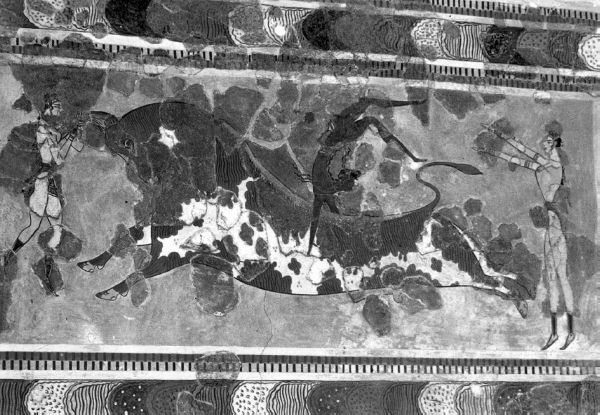
(bull-leaping), originally from the upper-story portion of the east wall of the palace at Knossos in Crete, 17001400 BC. The Cretan girl is doing the dangerous and difficult bit in the bull-leaping, as depicted here; modern attempts to recreate the leaping on todays cattle have resulted in a number of deaths. From Heraklion Archaeological Museum.
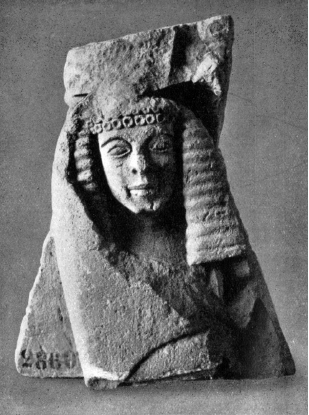
A bust from Mycenae, seventh century. Originally from a Doric temple, the top of the pediment is above the head. The hair resembles an Egyptian wigtwo rows of curls over the forehead, falling onto the shoulders.
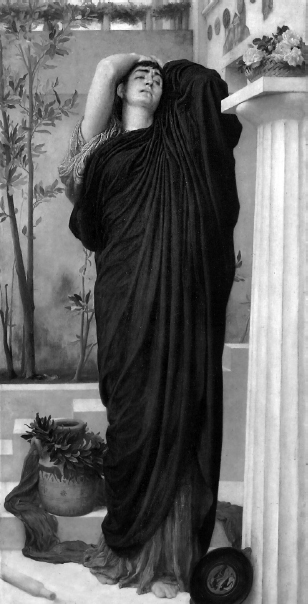
Electra at the Tomb of Agamemnon by Frederic Leighton, c. 1868.
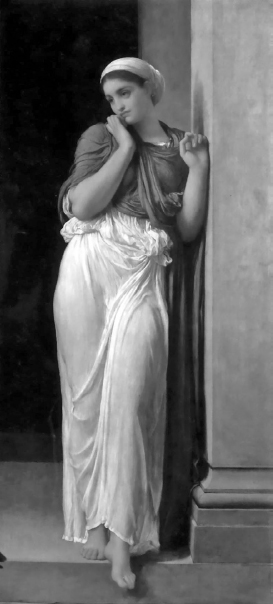
Nausicaa by Frederic Leighton, c. 1879.
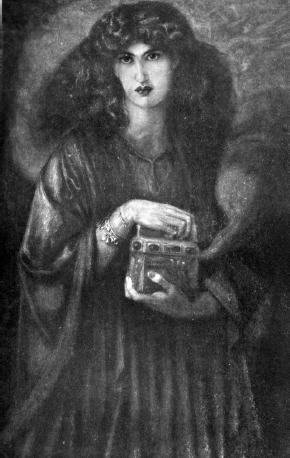
Pandorathe woman who started it allwith her box of baneful tricks. Dante Gabriel Rossetti, 1870. The model was Jane Morris, the wife of William Morris.
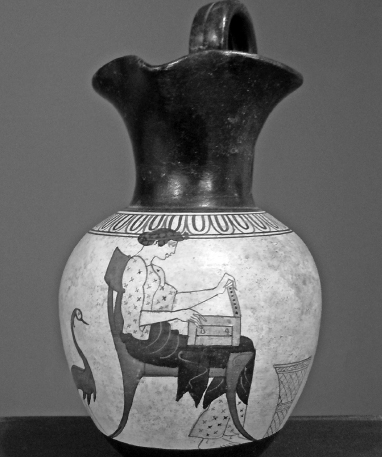
A copy of a 475 BC Attic oinichoe (wine pitcher), painted by P. Vaglis. The original is now in the Athens National Museum. It depicts a woman about to start working the wool, with her kalathos (basket) on the right. Wool-working was a powerful symbol, indicating respectability in a woman, and the proper observance of wifely duties. It all started with Penelope, in Homers Odyssey. The peacock in close attendance was sacred to Hera, goddess of all things womanly.
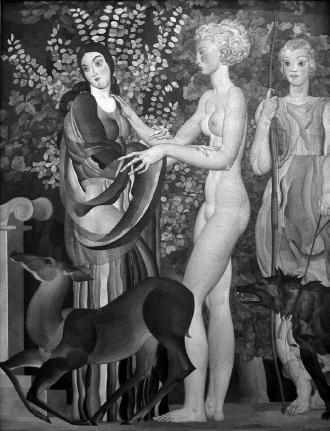
Iphignie by Louis Billotey, 1935. It depicts Iphigenia (centre) in an embrace with Clytemnestra, with Artemis gazing at the girl. In Euripides Iphigeneia in Aulis, Iphigenia was turned into a deer, to save her from being sacrificed, so that the Achaean fleet could sail for Troy.
Next pageFont size:
Interval:
Bookmark:
Similar books «Women in Ancient Greece»
Look at similar books to Women in Ancient Greece. We have selected literature similar in name and meaning in the hope of providing readers with more options to find new, interesting, not yet read works.
Discussion, reviews of the book Women in Ancient Greece and just readers' own opinions. Leave your comments, write what you think about the work, its meaning or the main characters. Specify what exactly you liked and what you didn't like, and why you think so.



